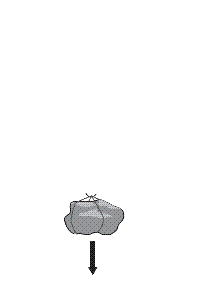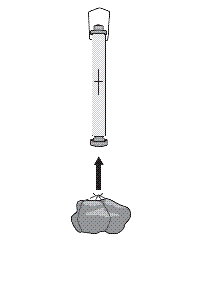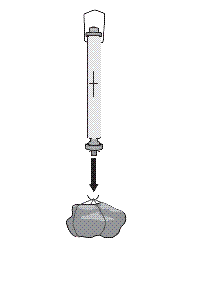 For example, suppose the tractor is stuck in the
ditch. The whole family has pitched in to pull.
Because they are all pulling in the same direction,
their forces combine.
For example, suppose the tractor is stuck in the
ditch. The whole family has pitched in to pull.
Because they are all pulling in the same direction,
their forces combine.
The reason we are interested in forces is that forces cause things to happen. The first step to understanding them is to discuss (and clearly define) the case that nothing is happening. This is possible, even when there are forces present!
 For example, suppose the tractor is stuck in the
ditch. The whole family has pitched in to pull.
Because they are all pulling in the same direction,
their forces combine.
For example, suppose the tractor is stuck in the
ditch. The whole family has pitched in to pull.
Because they are all pulling in the same direction,
their forces combine.
If the only force on the tractor were the forces due to the people, something would have to happen, because there would be an unbalanced force (we could also say that there is a net force, meaning that the combination of forces is not zero). If the tractor does not start moving, there must be other forces acting counter to the pull of the people -- perhaps the tractor wheel is caught on a tree root. For the tractor to remain stationary the net force on it must be zero; all forces acting on it must be balanced.
This suggests a rule: When an object is not moving, the forces on it balance: there is no net force. It is a special case of the Law of Inertia which we will state in full later (the law also has something to say about objects that are moving).
In the previous unit we met the Law of Interaction which also deals with pairs of forces. Let's be careful to distinguish between the Laws. The Law of Inertia is a relationship among the forces acting on one particular object. In the case of the tractor the force of the people on the tractor is balanced by the force of the tree root on the tractor. The Law of Interaction also involves opposing forces, but what is being related are forces acting on different objects. For example, the force of the people on the tractor is equal and opposite to the force of the tractor on the people.
For an example of the interplay of the Law of Interaction and the Law of Inertia, suppose we are weighing a rock. The weight is the force of gravity on the rock (diagram A), but what the scale registers is the force that the rock exerts on the scale (diagram C). These forces are equal, but we need to invoke both concepts to show this.
| Related by the Law of Inertia | ||
|---|---|---|
| A. Gravity pulls down on the rock | B. The scale pulls up on the rock | C. The rock pulls down on the scale |
 |
 |
 |
| A. Gravity pulls down on the rock | B. The scale pulls up on the rock | C. The rock pulls down on the scale |
| Related by the Law of Interaction | ||
According to the Law of Interaction, the force exerted on the scale by the rock is equal in size to the force on the rock due to the scale (diagram B). When the rock is not moving, the forces on the rock must balance according to the Law of Inertia, so that the force of gravity on the rock is equal to the force of the scale on the rock. We have a chain of equalities: the force of gravity on the rock is equal to the force of the scale on the rock, which is equal to the force of the rock on the scale.
The Law of Inertia is usually called Newton's First Law, and the Law of Interaction is usually called Newton's Third Law. We have decided to give them more descriptive names in this course.
Law of Interaction and Law of Inertia